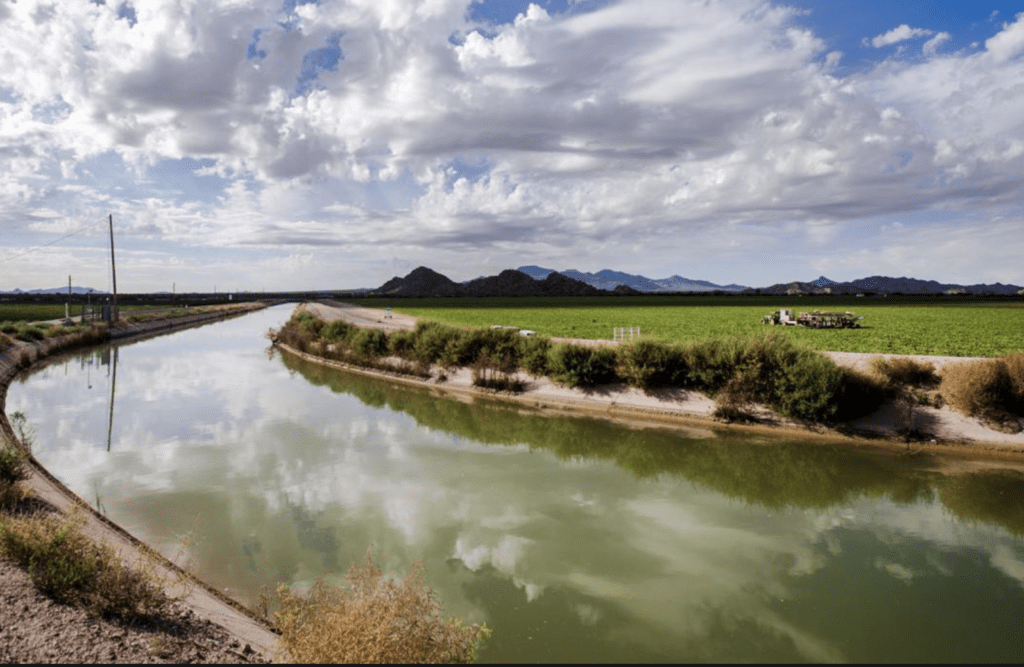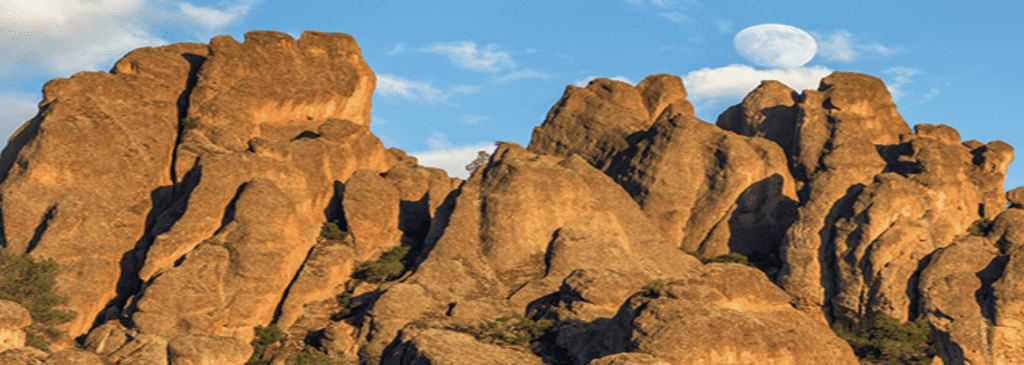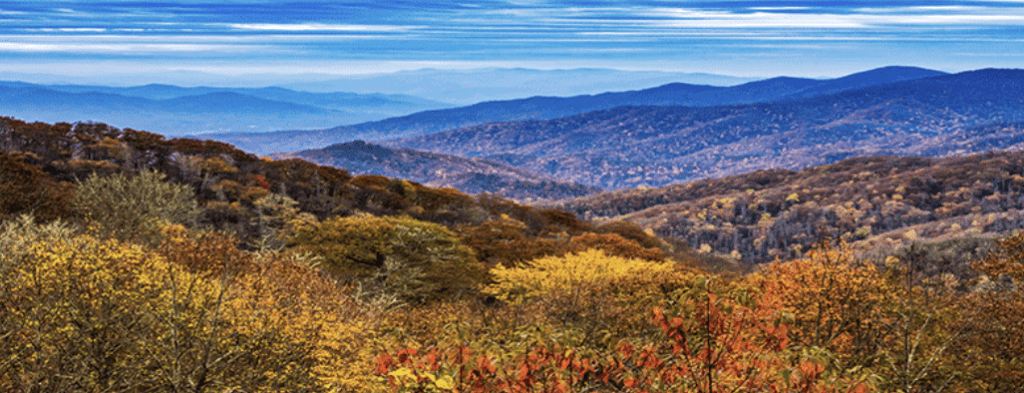Daniel Salzler No. 1148
EnviroInsight.org Four Items May 6, 2022
—————Feel Free To Pass This Along To Others——————
If your watershed is doing something you would like others to know about, or you know of
something others can benefit from, let me know and I will place it in this
Information newsletter.
If you want to be removed from the distribution list, please let me know.
Please note that all meetings listed are open.
Enhance your viewing by downloading the pdf file to view photos, etc. The
attached is all about improving life in the watershed. If you want to be removed from
the distribution list, please let me know. Please note that all meetings listed are open.
Check our website at EnviroInsight.org
1. With Water Dwindling In The Southwest, Arizona Plans For Coming Restrictions
KUNC | By Alex Hage
The federal government declared a water shortage for much of the Southwest last week, resulting in the first ever mandatory cutbacks for some who draw from the Colorado River. As two decades of drought, increased demand and climate change cut deep into the West’s water supply, the region is looking ahead to a future where supplies might drop further still.
The first to see cuts will be farmers in central Arizona.
“Nobody is feeling like this is just a blip on the radar and we’re going to have to ride this out for two or three years and then things will get back to normal,” said Chelsea McGuire, director of government relations at the Arizona Farm Bureau.
She grew up in a family of farmers in Pinal County, where growers will bear the brunt of this first wave of water cutbacks.
“I think everyone is embracing — as much as we’re sick of this term right now — a new normal,” McGuire said. “And figuring out, ‘Okay, how do I make my business operate? How do I keep my family business intact with the reality that we’re facing right now?’”
Arizona is set to lose 8% of its total water supply when restrictions go into effect in January. Those cuts were triggered by a grim forecast for Lake Mead, a reservoir which feeds millions across the Southwest. The Bureau of Reclamation predicted that the lake’s water level will continue to dip over the next two years, past already historic lows.
Because of that, McGuire said Pinal County and those Arizona farmers could be a “canary in the coal mine” for others in the region.

“It is not a crisis,” said Ted Cooke, general manager of the Central Arizona Project. “But it will become a crisis if we don’t pay attention and develop additional responses to the situation.”
Cooke is in charge of a manmade river that pipes water from the Colorado River across more than 300 miles of desert, eventually supplying farmers and cities — including Phoenix and Tucson. He said those forecasts are useful.
“It doesn’t make the news any less bad, but at least I can plan for it and take the next step I can take,” Cooke said.
January’s cutbacks are slated to impact farmers, but Cooke said restrictions to municipal water supplies — affecting homes and businesses — could begin as soon as five years from now. But because of storage and conservation work, residents probably won’t see the effects for even longer.
“We are not even close to the end of our rope of saying, we don’t have any more ideas, we are out of water and we can’t think of anything else to do,” Cooke said. “We are two decades away from that.The only way in two decades that we will reach that point is if we don’t do any more starting today for that next 20 years.”
Any new techniques or re-energized conservation tactics would compound existing water-saving measures across the region. In Tucson, for example, the city banks roughly one third of its Colorado River allocation each year, saving a portion for drier days in the future.
It does so by pumping water into storage basins outside the city limits. Some water seeps into the cracked desert earth and is later retrieved as groundwater from a subterranean aquifer.
On top of that, the city recycles and treats wastewater for park lawns and golf courses. John Kmiec, Tucson’s water manager, said they’ve already had to implement re-use and conservation efforts to accommodate a growing population. As a result, the city has managed to keep its total water use pretty much flat for about 30 years, even as it gained 200,000 residents.

The coming years will likely test the long-term sustainability of those conservation measures, if water levels drop as forecasted. Complicating the situation even further, climate change has made it harder to predict how much water will be available for the region to use.
“Climate change is water change,” said Jennifer Pitt, director of the Audubon Society’s Colorado River program. “We can no longer rely on the fact that we know what the hydrology is going to be in the Colorado River basin and that has water managers worried.”
Historically, she said, the dry times were balanced out by wet years. But thanks to warmer temperatures and erratic climate patterns, that predictable cycle is no longer the reality.
“Water managers like to say ‘Hope for the best, but make sure you’re prepared for the worst,’” Pitt said. “And we can’t even tell you with certainty what the worst could be.”
This story is part of ongoing coverage of the Colorado River basin, produced by KUNC in northern Colorado, and supported by the Walton Family Foundation. KUNC is solely responsible for its editorial content.
2. How Is Your National Park Knowledge?
A. Which state has the most National Parks?
California
Alaska
Utah
Colorado
B. Where did the first female park ranger serve?
Yellowstone National Park
YosemiteNational Park
Denali National Park and Preserve
Acadia National Park
C.. The most visited of all national parks within a year is:
Glacier National Park
Grand Canyon National Park
Rocky Mountain National Park
Great Smokey Mountain National Park

D. Can you identify this historic site?
Lyndon B. Johnson National Historic Park
Carl Sandburg Home National Historic Sitre
Medgar and Myrle Evers Home National Monument
Carter G Woodson home National Historic Site
E. How many endangered species call national parks their homes?
400
50
150
1,000
Source: National Parks Foundation
See the end of the newsletter. for answers
3. Plastic Water Bottles Exposed To Heat Can Be Toxic. Don’t drink water from plastic bottles left in a hot place (like inside your car) for a long time. Chemicals in plastics, mainly antimony (Sb) and Bisphenol A (BPA) can leach into any liquid in a plastic bottle. Research demonstrates that these chemicals can potentially cause diseases (such as cancer) when consumed.
Antimony (Sb)

When subjected to heat, antimony leaches from the plastic bottle into the water. At 39°F (4°C), 3.18 nanograms per liter (or 0.00318 parts per billion) were leached. At 77°F (25°C), 6.88 ng/L (0.00688 ppb) were leached from the plastic bottle. At 158°F (70°C), temperature inside a car in Arizona in just a few minutes, levels of antimony increased to 2604 ng/L (2.604 ppb).
Virtually all plastic water bottles are made from polyethylene terephthalate (PET) and typically contain 190–300 mg/kg of antimony. Bottled waters become contaminated during storage due to a release of antimony from PET plastic. Actually, almost all packaged drinks are made from PET plastic. This includes milk, coffee, and acidic juice, among types of food containers.
Adults drinking 2 Liters of water a day, from a plastic bottle may experience an increase in cancer, increased blood cholesterol or decreased blood sugar, due to the consumption of antimony.
Bisphenol A (BPA)
BPA leached from the water bottle to the water when bottles were left in temperatures of 39o F to an increased amount at 158 F (70 C) to an average of 23.4/ ng/L (0.0234 ppb).
BPA is also a key ingredient in modern plastics found and the inner lining of canned foods, and it may act as hormone disrupter where synthetic chemicals called xenoestrogens (synthetic estrogen) mimic estrogen and attach to estrogen receptors (fooling the body into thinking its estrogen). This process interferes with the normal functioning of hormones. One study in prostate cancer cells showed that very low concentrations of BPA activated the androgen receptor and initiated proliferation of cancer cells, independent of testosterone (Wetherill et al. 2002).
BPA is found in plastics and canned goods. Canned goods of tomato sauce, vegetables and soups may contain the chemical in the inner lining called epoxy resins to avoid corrosion of the metal. Epoxy resins are filled with BPA. BPA enters the body when, let’s say, a plastic water bottle, is washed, heated or stressed, allowing the chemical to leach into the liquid and then enter the body.

Do This
Decrease exposure: Plastic bottles have a recycling code at the bottom of the bottle that looks like a triangular arrow around a number. Water in plastic bottles numbered 1 (Polyethylene Terephthalate (PET) and 2 (High Density Polyethylene (HDPE)), are relatively safe to drink from.
Avoid these numbers: 3 (Polyvinyl Chloride), 6
(Polystyrene) and 7 (Other – using more than one resin). Plastics especially with the Number 7 contain BPA.
Don’t use old plastic water bottles. Exposures to plastics chemicals may be greater when the surface is worn down. Don’t wash your plastic drinking bottle in the dishwasher. The big don’t of course is “don’t leave water in plastic bottles in your car”.
Use stainless steel or glass/ glass lined bottles for utensils in lieu of plastics.
References
Westerhoff, P., Prapaipong, P., Shock, E., Hillaireau, A. (2008). Antimony leaching from polyethylene terephthalate (PET) plastic used for bottled drinking water. Water Res. 42: 551–556.
World Health Organization. Water Sanitation Health: Antimony in drinking water. Accessed 1 October, 2014. http://www.who.int/water_sanitation_health/dwq/chemicals/0304_74/en/index9.html Fan YY, Zheng JL, Ren JH, Luo J, Cui XY, Ma LQ. (2014). Effects of storage temperature and duration on release of antimony and bisphenol A from polyethylene terephthalate drinking water bottles of China. Environmental Pollution 192:113-20.
International Journal of Environmental Research and Public Health. December 7, 2010
4. May Eight Hour OSHA Refresher. There will be an 8-Hour OSHA Refresher class on May 21 in Glendale, AZ. The class will begin at 8:00 a.m. and run to 4:00 p.m. with a continental breakfast breakfast and a lunch provided. Cost of the class is $80.
Seating is limited so reservations are appreciated. Call Dan at 623-930-8197 or e-mail at sconflict@aol.com
Answers To No 2 Above

A. With 9 National parks, California has the most parks of any state, including its newest park, Pinnacles National Park (2013).
The National Park System encompasses 423 national park sites in the United States.
They span across more than 84 million acres in each state and extend into the territories, including parks in Puerto Rico, the Virgin Islands, American Samoa, and Guam. Within the system, there are 62 sites that include “National Park” as their proper name. The system is comprised of 20 national park types that fall under the protection of the National Park Service to preserve for this and future generations.
B. Clare Marie Hodges became the nation’s first female park ranger in Yosemite National Park.

The first park rangers saddled up in 1905, and as might be expected at that time, they were all men. But when the United States entered World War I, many of those rangers answered their country’s call. Claire Marie Hodges, a teacher at Yosemite Valley School, saw an opportunity. Hodges wrote to the superintendent of Yosemite, Washington Lewis. Her letter read, in part, “Probably you’ll laugh at me, but I want to be a ranger.” Lewis agreed, and in 1918, Hodges became the first female park ranger. Hodges was an extraordinary woman and trailblazer in the National Park Service and serves as an inspiration for future park stewards.
C. Great Smoky Mountains National Park receives about 12.5 million visitors each year. This park gets more than double the next most-visited park.

Known for whimsical wildflowers, beautiful autumn leaves, alluring. Known for whimsical wildflowers, beautiful autumn leaves, alluring waterfalls, and abundant wildlife, it is easy to literally see why Great Smoky Mountains National Park is the most visited national park in America. Nestled in the crook of North Carolina and spilling into Tennessee, this park covers 522,427 acres and boasts 10 campsites, 11 picnic areas, more than 730 miles of fish-bearing streams, and 16 mountain peaks.

D.Their home became a unit of the National Park Service in November 2020.
The Medgar and Myrlie Evers Home National Monument in Jackson, Mississippi is a unit of the National Park Service honoring the life and work of these two important civil rights figures. As the first National Association for the Advancement of Colored People (NAACP) field secretary in Mississippi Medgar Evers (1925-1963) worked to end racial violence and improve the quality of life for black Mississippians. Evers and his wife Myrlie established the NAACP office in Jackson, Mississippi in the mid-1950s. Medgar tirelessly led marches, prayer vigils, voter registration drives and boycotts, and persistently appealed to blacks and whites to work together for a peaceful solution to social problems. Their home became a unit of the National Park Service in November 2020.
E. National Parks are home to more than 400 endangered species.

The National Park Foundation is committed to helping to conserve native wildlife and restore critical habitats and ecosystems in our nation’s most treasured places for the enjoyment, education, and inspiration of current and future generations. The Foundation and our partners apply the best conservation science to study and protect the most biologically diverse landscapes in the country, ensuring the health and vibrancy of park environments supporting iconic wildlife from bison and wolves to bald eagles and California Condors.
Copyright:EnviroInsight.org 2022
